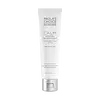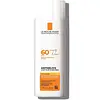What's inside
What's inside
 Key Ingredients
Key Ingredients

 Benefits
Benefits

 Concerns
Concerns

 Ingredients Side-by-side
Ingredients Side-by-side

Titanium Dioxide 3.85%
Cosmetic ColorantZinc Oxide 3.12%
Cosmetic ColorantWater
Skin ConditioningC12-15 Alkyl Benzoate
AntimicrobialIsononyl Isononanoate
EmollientPrunus Armeniaca Kernel Oil
MaskingCyclopentasiloxane
EmollientGlyceryl Stearate
EmollientPEG-100 Stearate
Butylene Glycol
HumectantPentylene Glycol
Skin ConditioningCetearyl Alcohol
EmollientDimethicone
EmollientGlycine Soja Sterols
EmollientVp/Eicosene Copolymer
Avena Sativa Kernel Extract
AbrasiveGlycerin
HumectantSodium Hyaluronate
HumectantAllantoin
Skin ConditioningTocopheryl Acetate
AntioxidantHydrogenated Lecithin
EmulsifyingTetrahexyldecyl Ascorbate
AntioxidantSuperoxide Dismutase
AntioxidantUbiquinone
AntioxidantCeramide Ng
Skin ConditioningMethicone
EmollientPalmitoyl Hexapeptide-12
Skin ConditioningPEG-10 Dimethicone
Skin ConditioningCucumis Sativus Fruit Extract
EmollientCaprylic/Capric Triglyceride
MaskingTribehenin
EmollientPEG-10 Phytosterol
EmulsifyingSorbitan Stearate
EmulsifyingPolyhydroxystearic Acid
EmulsifyingAlumina
AbrasivePolysorbate 20
EmulsifyingAluminum Stearate
Cosmetic ColorantXanthan Gum
EmulsifyingCaprylyl Glycol
EmollientDisodium EDTA
Ethylhexylglycerin
Skin ConditioningPhenoxyethanol
PreservativeChlorphenesin
AntimicrobialTitanium Dioxide 3.85%, Zinc Oxide 3.12%, Water, C12-15 Alkyl Benzoate, Isononyl Isononanoate, Prunus Armeniaca Kernel Oil, Cyclopentasiloxane, Glyceryl Stearate, PEG-100 Stearate, Butylene Glycol, Pentylene Glycol, Cetearyl Alcohol, Dimethicone, Glycine Soja Sterols, Vp/Eicosene Copolymer, Avena Sativa Kernel Extract, Glycerin, Sodium Hyaluronate, Allantoin, Tocopheryl Acetate, Hydrogenated Lecithin, Tetrahexyldecyl Ascorbate, Superoxide Dismutase, Ubiquinone, Ceramide Ng, Methicone, Palmitoyl Hexapeptide-12, PEG-10 Dimethicone, Cucumis Sativus Fruit Extract, Caprylic/Capric Triglyceride, Tribehenin, PEG-10 Phytosterol, Sorbitan Stearate, Polyhydroxystearic Acid, Alumina, Polysorbate 20, Aluminum Stearate, Xanthan Gum, Caprylyl Glycol, Disodium EDTA, Ethylhexylglycerin, Phenoxyethanol, Chlorphenesin
Butyl Methoxydibenzoylmethane 3%
UV AbsorberHomosalate 10%
Skin ConditioningEthylhexyl Salicylate 5%
UV AbsorberOctocrylene 7%
UV AbsorberWater
Skin ConditioningCyclopentasiloxane
EmollientAlcohol Denat.
AntimicrobialSilica
AbrasiveDicaprylyl Ether
EmollientStyrene/Acrylates Copolymer
PEG-30 Dipolyhydroxystearate
EmulsifyingDimethicone
EmollientCyclohexasiloxane
EmollientPolymethylsilsesquioxane
Nylon-12
Dicaprylyl Carbonate
EmollientDiethylhexyl Syringylidenemalonate
Skin ProtectingPhenoxyethanol
PreservativeLauryl PEG/PPG-18/18 Methicone
Skin ConditioningSodium Chloride
MaskingCaprylyl Glycol
EmollientPEG-8 Laurate
EmulsifyingIsostearyl Alcohol
EmollientPoly C10-30 Alkyl Acrylate
Emulsion StabilisingDisteardimonium Hectorite
StabilisingP-Anisic Acid
MaskingCaprylic/Capric Triglyceride
MaskingDisodium EDTA
Cassia Alata Leaf Extract
AstringentPropylene Carbonate
SolventSodium Dodecylbenzenesulfonate
CleansingTocopherol
AntioxidantButyl Methoxydibenzoylmethane 3%, Homosalate 10%, Ethylhexyl Salicylate 5%, Octocrylene 7%, Water, Cyclopentasiloxane, Alcohol Denat., Silica, Dicaprylyl Ether, Styrene/Acrylates Copolymer, PEG-30 Dipolyhydroxystearate, Dimethicone, Cyclohexasiloxane, Polymethylsilsesquioxane, Nylon-12, Dicaprylyl Carbonate, Diethylhexyl Syringylidenemalonate, Phenoxyethanol, Lauryl PEG/PPG-18/18 Methicone, Sodium Chloride, Caprylyl Glycol, PEG-8 Laurate, Isostearyl Alcohol, Poly C10-30 Alkyl Acrylate, Disteardimonium Hectorite, P-Anisic Acid, Caprylic/Capric Triglyceride, Disodium EDTA, Cassia Alata Leaf Extract, Propylene Carbonate, Sodium Dodecylbenzenesulfonate, Tocopherol
 Reviews
Reviews

Ingredients Explained
These ingredients are found in both products.
Ingredients higher up in an ingredient list are typically present in a larger amount.
This ingredient is an emollient, solvent, and texture enhancer. It is considered a skin-softener by helping the skin prevent moisture loss.
It helps thicken a product's formula and makes it easier to spread by dissolving clumping compounds.
Caprylic Triglyceride is made by combining glycerin with coconut oil, forming a clear liquid.
While there is an assumption Caprylic Triglyceride can clog pores due to it being derived from coconut oil, there is no research supporting this.
Learn more about Caprylic/Capric TriglycerideCaprylyl Glycol is a humectant and emollient, meaning it attracts and preserves moisture.
It is a common ingredient in many products, especially those designed to hydrate skin. The primary benefits are retaining moisture, skin softening, and promoting a healthy skin barrier.
Though Caprylyl Glycol is an alcohol derived from fatty acids, it is not the kind that can dry out skin.
This ingredient is also used as a preservative to extend the life of products. It has slight antimicrobial properties.
Learn more about Caprylyl GlycolCyclopentasiloxane, or D5, is a silicone used to improve texture of products and trap moisture.
D5 is considered lightweight and volatile. Volatile means it evaporates quickly after application. Once evaporated, D5 leaves a thin barrier that helps keep skin hydrated.
It is also an emollient. Emollients help soften the skin and prevent water loss. Silicones create a silky texture in products. D5 helps other ingredients become more spreadable.
Studies show D5 is safe to use in skincare products. We recommend speaking with a skincare professional if you have concerns.
Learn more about CyclopentasiloxaneDimethicone is a type of synthetic silicone created from natural materials such as quartz.
What it does:
Dimethicone comes in different viscosities:
Depending on the viscosity, dimethicone has different properties.
Ingredients lists don't always show which type is used, so we recommend reaching out to the brand if you have questions about the viscosity.
This ingredient is unlikely to cause irritation because it does not get absorbed into skin. However, people with silicone allergies should be careful about using this ingredient.
Note: Dimethicone may contribute to pilling. This is because it is not oil or water soluble, so pilling may occur when layered with products. When mixed with heavy oils in a formula, the outcome is also quite greasy.
Learn more about DimethiconeDisodium EDTA plays a role in making products more stable by aiding other preservatives.
It is a chelating agent, meaning it neutralizes metal ions that may be found in a product.
Disodium EDTA is a salt of edetic acid and is found to be safe in cosmetic ingredients.
Learn more about Disodium EDTAPhenoxyethanol is a preservative that has germicide, antimicrobial, and aromatic properties. Studies show that phenoxyethanol can prevent microbial growth. By itself, it has a scent that is similar to that of a rose.
It's often used in formulations along with Caprylyl Glycol to preserve the shelf life of products.
Water. It's the most common cosmetic ingredient of all. You'll usually see it at the top of ingredient lists, meaning that it makes up the largest part of the product.
So why is it so popular? Water most often acts as a solvent - this means that it helps dissolve other ingredients into the formulation.
You'll also recognize water as that liquid we all need to stay alive. If you see this, drink a glass of water. Stay hydrated!
Learn more about Water